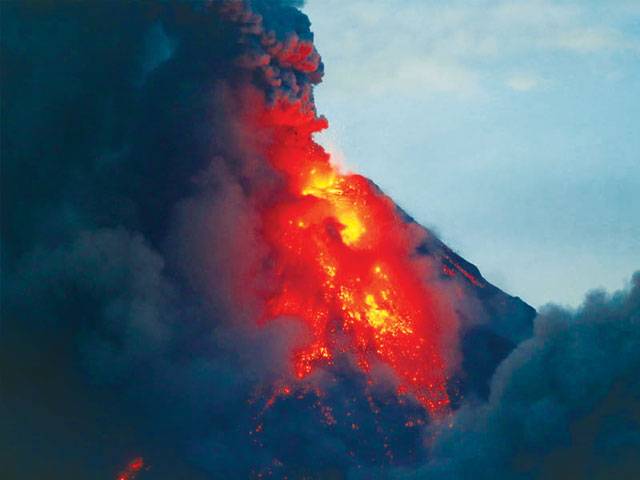MANILA-Mount Mayon, the most active volcano in the Philippines, spewed ash on Monday and is “at a moderate level of unrest,” the Philippine Institute of Volcanology and Seismology (Phivolcs) said.
Phivolcs Chief Renato Solidum said two phreatic eruptions were observed between 7:59 a.m. to 8:05 a.m. local time on Monday. “These are indications that the volcano is abnormal,” he said. Solidum added that alert level two raised over Mt. Mayon.
The institute reminded the public that “sudden explosions, lava collapses, pyroclastic density currents (PDCs) and ashfall can still occur and threaten areas in the upper to middle slopes of (the volcano).” The 2,460-meter (8,070-ft) cone-shaped Mt. Mayon volcano is located in Albay province, approximately 300 km southeast of Manila on the island of Luzon.Mt. Mayon last erupted in January, prompting the authorities to evacuate thousands of villagers. The institute said Monday’s eruptions “generated grayish to grayish white ash plume that rose 300 to 500 meters above the summit before drifting southwest.” On Sunday, the institute said it observed an evaluated sulfur dioxide emission.
The institute warned the public to stay away from the six km-radius so-called Permanent Danger Zone (PDZ) and a precautionary seven km-radius Extended Danger Zone, or EDZ, in the south-southwest to east-northeast sector, stretching from the town of Camalig to Santo Domingo. “People residing close to these danger areas are also advised to observe precautions associated with rockfalls, PDCs and ashfall,” the institute said. The institute also urged civil aviation authorities to advise their pilots to avoid flying close to the volcano’s summit as airborne ash and ballistic fragments from sudden explosions and PDCs may pose hazards to airplanes.
Mt. Mayon is a popular tourist destination in the Bicol region. It is famed for its near-perfect cone but has a long history of deadly eruptions. It has erupted 51 times during the last 400 years.
The volcano has an elevation of 2.46 km and a base diameter of 20 km.
In an 1814 eruption, more than 1,200 people were killed and three towns were buried under mud and rock.
The Philippine archipelago straddles the Pacific “Ring of Fire” and is prone to earthquakes and volcanic eruptions.






